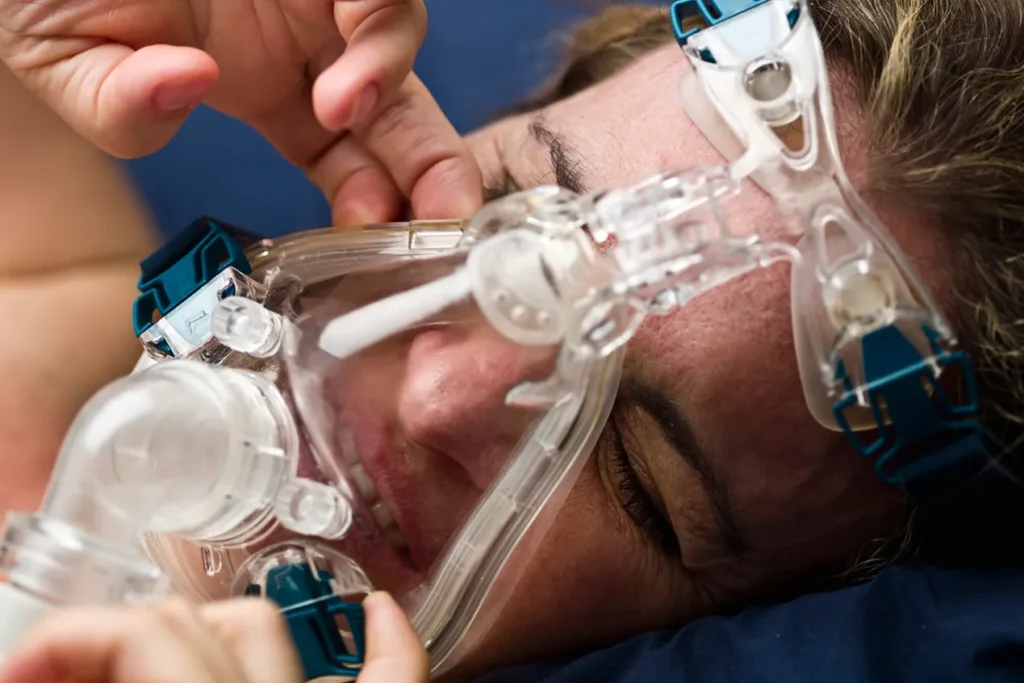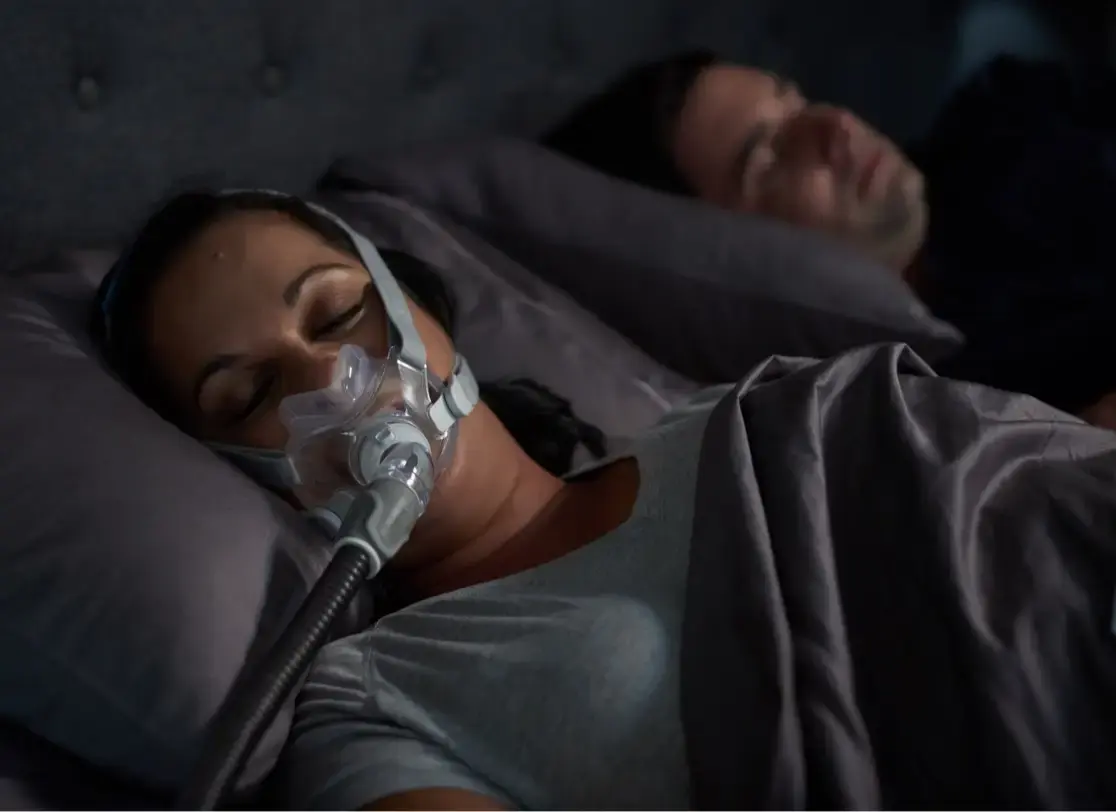Understanding CPAP Therapy
Continuous Positive Airway Pressure (CPAP) therapy is a common treatment for obstructive sleep apnoea, a condition characterised by repeated interruptions in breathing during sleep. The therapy involves the use of a CPAP machine that delivers a steady stream of air through a mask, keeping the airways open and allowing for uninterrupted sleep. The effectiveness of this therapy largely depends on the quality and fit of the CPAP mask.
With a range of CPAP masks available on the market, patients often face the dilemma of choosing the right one. Many assume that the most expensive mask will provide the best results. However, this assumption can lead to misconceptions about what constitutes an effective CPAP mask.
Common Myths About CPAP Masks
Several myths surround CPAP masks, particularly regarding their price and effectiveness. Disentangling these myths is crucial for patients seeking the best possible treatment for their sleep apnoea.
Choosing the right CPAP mask is not merely about price; it is essential to consider factors such as the mask’s style, size, and the patient’s sleeping position. There are primarily three types of masks: nasal masks, full-face masks, and nasal pillows. Each type has its own advantages and disadvantages. For instance, nasal masks are often preferred for their lightweight design and minimal coverage, making them a popular choice for those who feel claustrophobic. In contrast, full-face masks can be beneficial for mouth breathers or those who require higher pressure settings, as they provide a secure seal around both the nose and mouth.

In conclusion, the belief that the best CPAP mask is always the most expensive one is a myth that can lead to misguided decisions. The effectiveness of a CPAP mask depends on various factors, including fit, comfort, and individual needs, rather than solely on its price. By understanding the different types of masks available and considering personal preferences, patients can make informed choices that enhance their CPAP therapy experience.
Moreover, the comfort of the mask is paramount, as a poorly fitting mask can lead to discomfort, skin irritation, and even air leaks, which can compromise the effectiveness of the therapy. Many manufacturers offer a variety of sizes and adjustable features to ensure a snug fit. It is advisable for patients to try on different masks, ideally during a titration study or a fitting session at a sleep clinic, to determine which option feels the most comfortable and secure. Additionally, regular maintenance of the CPAP equipment, including cleaning the mask and replacing parts as needed, plays a crucial role in ensuring optimal performance and longevity of the therapy.
Find more on: A Closer Look at CPAP Mask Brands Who Leads in Comfort and Innovation
Myth 1: Higher Price Equals Better Quality
One of the most prevalent myths is that the most expensive CPAP masks are inherently the best. While it is true that higher-priced masks may come with advanced features and better materials, this does not guarantee improved comfort or effectiveness for every user. Individual preferences and needs play a significant role in determining which mask will work best.
For instance, a mask that fits one person perfectly may cause discomfort for another. Therefore, it is essential to consider factors such as fit, style, and personal comfort rather than solely focusing on price. Many mid-range masks offer excellent performance and comfort without the hefty price tag.
Myth 2: All Masks Are the Same
Another common misconception is that all CPAP masks serve the same purpose. In reality, there are various types of masks designed to cater to different needs and preferences. The primary types include nasal masks, full-face masks, and nasal pillows. Each type has its advantages and disadvantages, making it crucial for users to assess their specific requirements.
Nasal masks are often preferred for their lightweight design and minimal coverage, while full-face masks provide a better seal for those who breathe through their mouths during sleep. Nasal pillows, on the other hand, are ideal for users who prefer a less intrusive option. Understanding these differences can help patients make informed decisions that are not solely based on price.

Myth 3: Expensive Masks Are More Durable
While it may seem logical to assume that a higher price tag correlates with greater durability, this is not always the case. The lifespan of a CPAP mask largely depends on the materials used and how well it is maintained. Regular cleaning and proper storage can significantly extend the life of a mask, regardless of its price.
Moreover, many affordable masks are made from high-quality materials that can withstand regular use. Patients should focus on the manufacturer’s recommendations for care and maintenance rather than relying solely on the price to gauge durability. Read more about durability at https://postgraduateeducation.hms.harvard.edu/trends-medicine/exploring-current-trends-medical-education
Factors to Consider When Choosing a CPAP Mask
When selecting a CPAP mask, several factors should be taken into account to ensure optimal comfort and effectiveness. These factors can often outweigh the importance of price alone.
Fit and Comfort
The fit of a CPAP mask is arguably the most critical factor in ensuring effective therapy. A well-fitted mask prevents air leaks, which can disrupt the therapy and lead to ineffective treatment. It is advisable to try on different masks and sizes to find the one that fits snugly without causing discomfort.
Comfort is also paramount, as a mask that causes irritation or pressure points can lead to poor compliance with therapy. Many manufacturers offer masks with adjustable features to enhance comfort, allowing users to find the right balance for their needs.
Type of Mask
The type of mask chosen can significantly impact the overall experience of CPAP therapy. As previously mentioned, nasal masks, full-face masks, and nasal pillows each have unique characteristics. Users should consider their sleeping habits and preferences when selecting a mask type.
For example, those who tend to breathe through their mouths may find full-face masks more suitable, while side sleepers might prefer nasal pillows to reduce bulk. Consulting with a healthcare provider can help in determining the most appropriate mask type based on individual circumstances.
Features and Technology
Modern CPAP masks often come equipped with various features designed to enhance user experience. These may include adjustable headgear, soft cushions, and even built-in humidifiers. While some of these features may be found on more expensive models, many affordable options also incorporate useful technologies. Click here to find more about humidifiers.
Patients should assess which features are essential for their comfort and therapy effectiveness. Investing in a mask with the right features can lead to improved compliance and better overall results, regardless of the price.
Cost-Effective Alternatives
For those concerned about the costs associated with CPAP therapy, there are several cost-effective alternatives that do not compromise on quality or effectiveness. Exploring these options can lead to significant savings without sacrificing comfort or performance.
Mid-Range Masks
Many mid-range CPAP masks offer excellent value for money. These masks often incorporate advanced features and high-quality materials at a more accessible price point. Patients should research and read reviews to identify masks that have received positive feedback for comfort and effectiveness.
It is also worth considering purchasing masks from reputable online retailers, which may offer competitive pricing compared to traditional medical supply stores. However, it is essential to ensure that the retailer is trustworthy and provides genuine products.
Refurbished or Second-Hand Masks
Another option for cost-conscious patients is to consider refurbished or second-hand CPAP masks. Many suppliers offer refurbished masks that have been cleaned and tested for quality. While this option requires careful consideration regarding hygiene and fit, it can provide significant savings for those on a budget.
Before purchasing a refurbished mask, it is advisable to check the return policy and ensure that the mask can be exchanged if it does not meet expectations. This approach allows users to explore a wider range of options without the financial burden of new, high-priced models.
Insurance Coverage and Assistance Programs
Many health insurance plans cover a portion of the costs associated with CPAP therapy, including masks. Patients should review their insurance policies to understand what is covered and what out-of-pocket expenses they may incur.
Additionally, some organisations and charities offer assistance programs for individuals who may struggle to afford CPAP equipment. Exploring these resources can provide financial relief and ensure access to necessary treatment.
Conclusion
Ultimately, it is essential to prioritise comfort and effectiveness over price alone. With careful research and consideration, individuals can find a CPAP mask that meets their needs without breaking the bank. By debunking these myths, patients can approach their CPAP therapy with confidence, ensuring a better night’s sleep and improved overall health.

